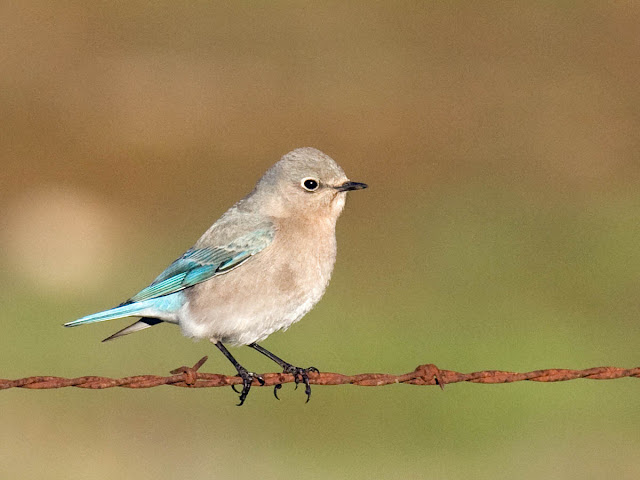In most of their ranges California Quail and Gambel's Quail are strongly separated by habitat and don't overlap. There are a couple of places in the eastern parts of southern California where the ranges of these two quail do meet. The Anza-Borrego Desert is one such area, with the town of Borrego Springs right on the edge of this tiny area of overlap between the California Quail descending from the oak hills above to the west and the Gambel's Quail from the mesquite and cactus desert to the east.
When birding in this area one should record most quail detected as "California/Gambel's Quail" unless you get a very good look. Evidently, based on the reference below, there is no impediment to breeding between the two species. They interbreed freely. Gambel's Quail have a wider variety of songs and calls than California Quail, so in the area of overlap voice is an unreliable identification feature. Evidently the birds themselves don't care what calls and songs are given when choosing potential mates. Fortunately, the area of overlap is small and the hybrid region restricted to this small area of overlap.
Birders do not take DNA sequencers into the field. Even direct hybrids don't always show it--they can look like "pure" members of either parent species, or a mixture. So even though birds of many species probably have some hybrid ancestors somewhere in their past; go with what you see."Quails are sedentary, and typically move less than 5 miles during the course of their lives." --Jennifer M. Gee. 2003. Causes and Consequences of Hybridization Between California and Gambel's Quail (Callipepla californica and C. gambelii). Princeton University Press.
I searched The Birds of North America species account for Gambel's Quail and its references, Western Birds, and the Searchable Ornithological Research Archive (SORA), as well as Google generally, and was unable to find descriptions or identification articles specifically separating California and Gambel's Quail from hybrids. There seems to be more identification material on gamebird breeding websites than on birding websites. Certainly someone must have covered this identification before? Let me know in the comments below. Thank you.
So, without an identification article immediately available, we'll go with the field guide descriptions and my recent photos to create a 5-criteria preliminary hybrid quail identification guideline:
1) Crown color on males (brown or rusty)
2) Forehead coloration on males (pale or black)
3) Upper breast/back color (dark gray or pale blue-gray)
4) Lower breast scaling (strong or nearly absent)
5) Belly patch on males (formed by dense brown scaling or more solid blackish)
Let's examine some photos I took recently at the Borrego Springs Resort on January 7, 2018. There were over 35 birds visiting a residential feeder that appeared to be both pure California Quail and Gambel's Quail, as well as apparent hybrids. About 15 of these birds I didn't get good looks at. All in all, though, under field birding conditions, plumage-wise this group of quail looked to be mostly Gambel's Quail and hybrids.
The lighting was overcast, creating slightly darker and duller colors without strong contrasting shadows. Some of the birds were under trees, others were out in the open.
 |
Photo 1. Typical-looking male California Quail. 1) Brown crown. 2) Pale forehead. 3) Dark gray upper parts. 4) Scaled lower breast. 5) Brown scaling on pale belly converge to form rusty patch.
|
 |
| Photo 2. Typical-looking male Gambel's Quail. 1) Rusty crown. 2) Black forehead. 3) Pale blue-gray upper parts. 4) Rather clear cream-colored lower breast. 5) Dark belly patch with faint scaling. |
Let's take a look at more of my photos from January.
 |
| Photo 5. Gambel's Quail. Again, all 5 criteria point to Gambel's. |

















